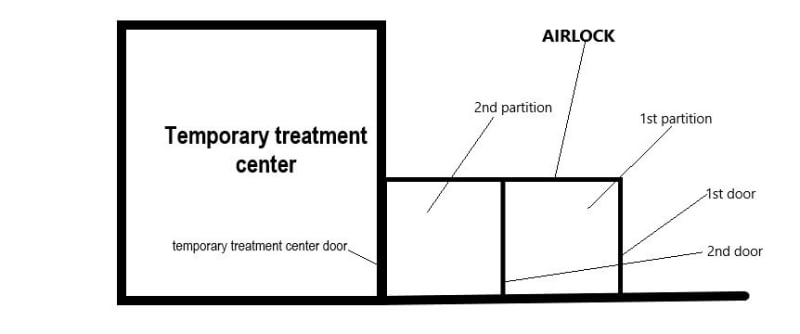According to some emerging evidence published in the journal by scientists at Princeton University, University of California Los Angeles (UCLA) and the US research agency, the National Institutes of Health (NIH) - though not in significant quantities, the Coronavirus can be airborne. Meaning, it may also remain airborne in much tinier droplets in form of “aerosol" (virus remains suspended in the air in very tiny water droplets, smaller than the ones coughed or sneezed long after larger droplets have fallen to surfaces or been breathed in). While it is in the air in droplets, an uninterrupted droplet from a sneeze can travel around 60 meters.
To establish protection mechanism in Coronavirus hot zone places besides wearing protective gear, we need to know which are potential hot zones for the spread of Coronavirus. There is no data that give percentile hot zone for the Coronavirus to exist in air in cities but according to my research and recommendations from my partners, the first hot zones for the Coronavirus is temporary shelters or places that are being used to treat confirmed patients. These places can be from basketball court to concert halls or other places where it’s indoor and have large space. These places are currently being used for treatment in many part of the world and it is my estimation that there is 80% chance the air is filled with the Coronavirus. After seeing images of the medical staffs going in and out of the treatment center in some African countries, air is freely going in and out of the treatment hall. This project is about installing a low cost, simple airlock mechanism that have two partition to go in and out of the treatment center installed in every door to prevent direct air flow from inside to outside of the temporary treatment center.
The airlock is made of transparent, hard plastic that have the same size of the entrance or exit door in width and height. The airlock have two partitions and the two partitions have a zipping like door and when a medical staff is about to go in, he/ she first unzip the first door of the airlock and enters in the first compartment. Then he/ she will zip it back to close the first door. After the first compartment of the airlock is closed he/ she will spray the surface of the first compartment with disinfectant killing potential Coronavirus that might enter in the first compartment. After spraying, the medical staff will unzip the second door of the air lock and enter in to the treatment center. This will save huge risk for prevention of spread of the virus in air for temporary treatment center because they are not built to prevent such scenarios.
https://solve.mit.edu/challenges/health-security-pandemics/solutions/20404
This project is one of my solution among my 16 which are
https://solve.mit.edu/challenges/health-security-pandemics/solutions/20816
https://solve.mit.edu/challenges/health-security-pandemics/solutions/21295
https://solve.mit.edu/challenges/health-security-pandemics/solutions/20404
https://solve.mit.edu/challenges/health-security-pandemics/solutions/20037
https://solve.mit.edu/challenges/health-security-pandemics/solutions/19817
https://solve.mit.edu/challenges/health-security-pandemics/solutions/19875
https://solve.mit.edu/challenges/health-security-pandemics/solutions/19737
https://solve.mit.edu/challenges/health-security-pandemics/solutions/19715
https://solve.mit.edu/challenges/health-security-pandemics/solutions/19673
https://solve.mit.edu/challenges/health-security-pandemics/solutions/19658
https://solve.mit.edu/challenges/health-security-pandemics/solutions/19611
https://solve.mit.edu/challenges/health-security-pandemics/solutions/19521
https://solve.mit.edu/challenges/health-security-pandemics/solutions/19420
https://solve.mit.edu/challenges/health-security-pandemics/solutions/19324
https://solve.mit.edu/challenges/health-security-pandemics/solutions/19521
Like this entry?
-
About the Entrant
- Name:Anteneh Gashaw
- Type of entry:individual
- Software used for this entry:Catia
- Patent status:none

